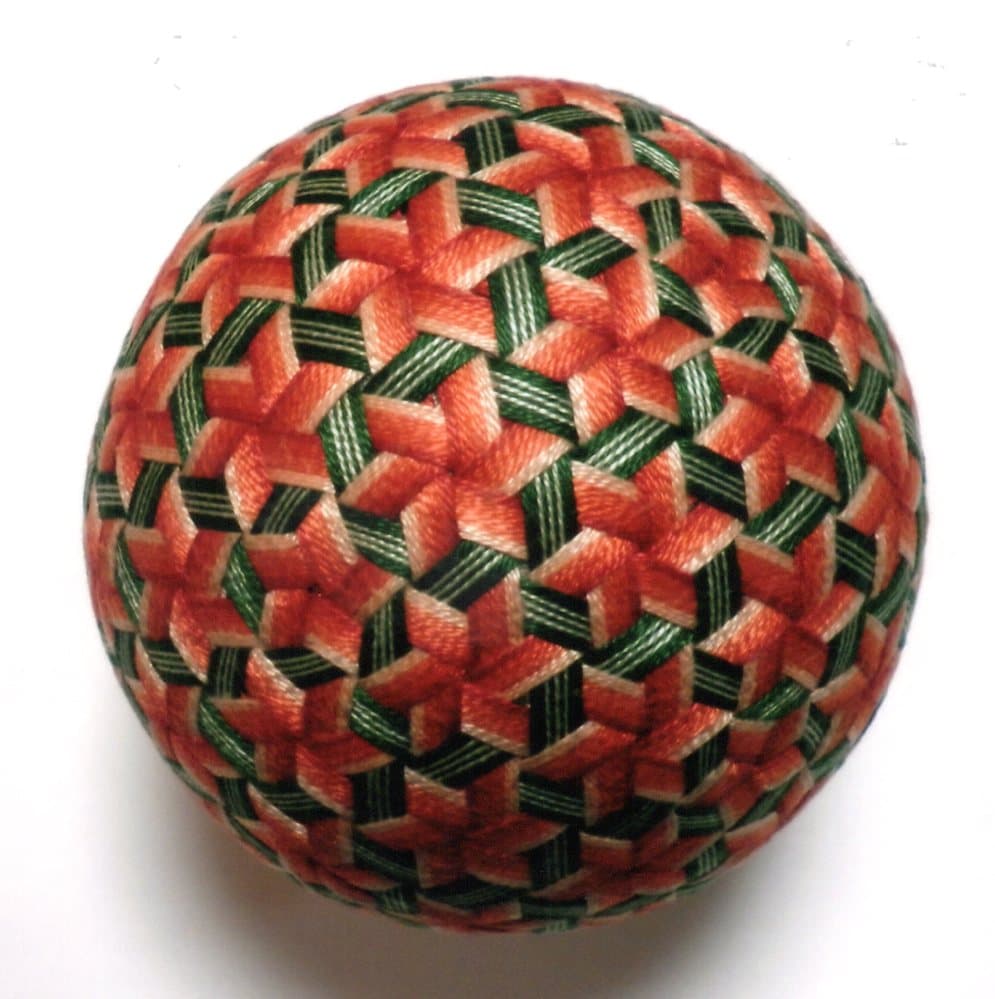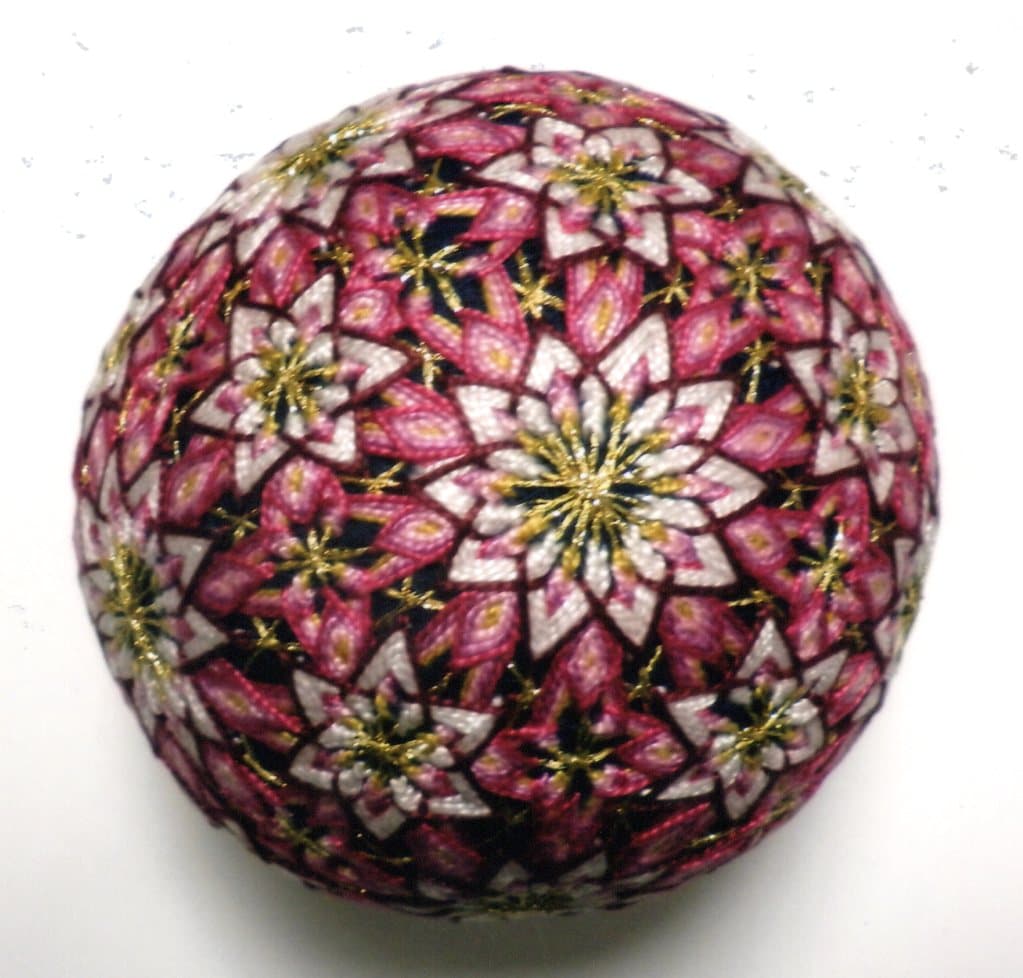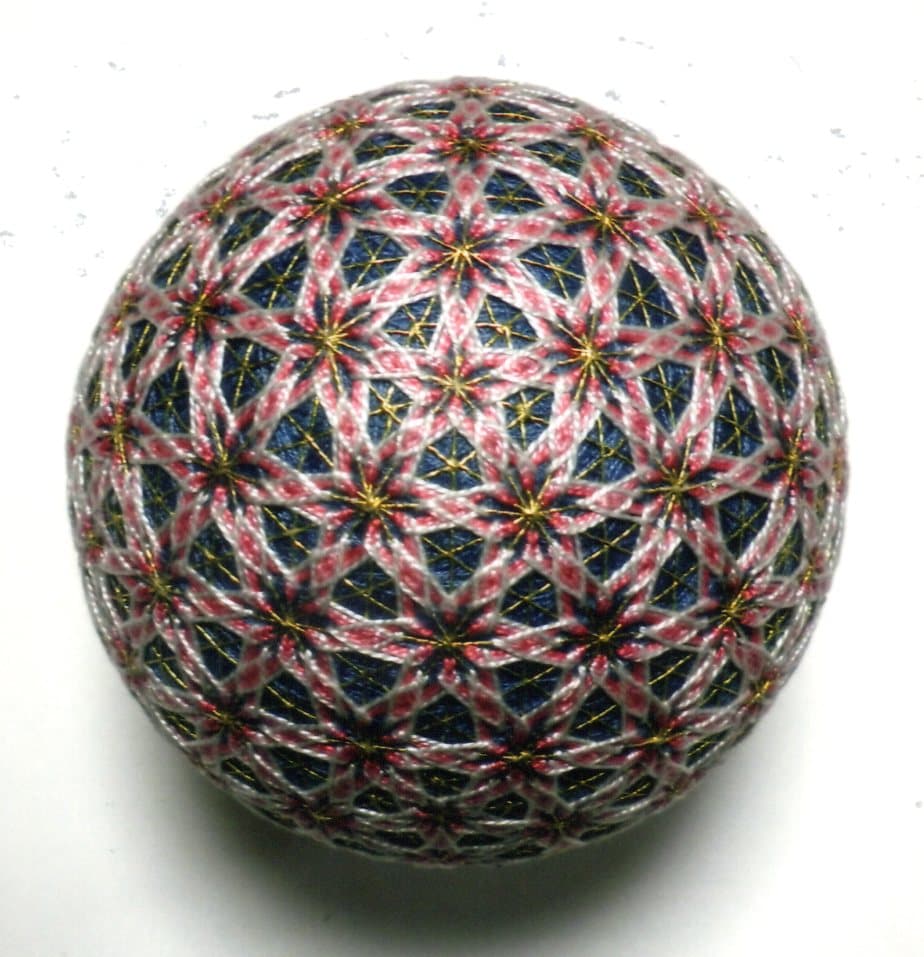Kiyoko Urata
Artists
Kiyoko Urata
Temari Artist
Naniwa Temari Association
Osaka, Japan
Statement
Kiyoko Urata (1926-), a Temari artist was the president of Naniwa-Temari society in Osaka, Japan. The Temaris with icosahedral symmetry shown here were embroidered by her. Having no mathematical background, she made these icosahedral patterns by trial and error. Her original technique are compiled in her book “Naniwa Temaris” (1995). Any spherical object was usually called Mari in ancient Japan. Temari is a ball held in hands (‘Te’). It has a spherical core made of cloth, chaff or wood in the past, or polystyrene in present times. On the surface, various spherical polyhedral patterns are subsequently embroidered by means of more colorful strings. Statement and Description by Koji Miyazaki
Artworks

Icosahedral Temari
15 x 15 x 15 cm
Silk thread
circa 1990

Icosahedral Temari
15 x 15 x 15 cm
Silk thread
circa1990

Icosahedral Temari
15 x 15 x 15 cm
Silk thread
circa 1990